The Mirador Magazine Story
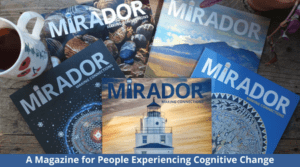 Submitted by Nikki Jardin, Co-founder
Submitted by Nikki Jardin, Co-founder
Mirador Magazine
“Mirador Magazine is a leisure-oriented, age-appropriate online and print publication for people experiencing cognitive change.”
That’s the short sentence we tend to use when people ask what Mirador is about and who it’s for. But I want to take a moment and share with you the meaning and the motivation behind why we created this magazine in the first place and why we feel it is so important to our community.
The Mirador Magazine Story: From the Beginning
So, like most stories, let’s start at the beginning.
In late 2016, one of my Aunts was diagnosed with Early Onset Alzheimer’s at the age of 63. We had been noticing something different in her behavior and lifestyle, but hadn’t tied it to anything serious.
Leigh (I’m using a pseudonym for her), had always been independent. She doesn’t have any children, and, at that time, she lived alone. We lived in different cities, but would visit a few times a year and talked several times a month on the phone.
I began noticing little things — the day after we had had a lengthy phone conversation, she would call again, seemingly forgetting that we had talked the day before. She began telling me that she was having trouble financially because clients she had had for many years were moving away.
When we did visit, her normally tidy home was disorganized, and she would have trouble moving on to the next plan in our day. Again, I didn’t think much of it, but at some point I was talking to my other Aunt and she asked me, “Have you noticed something different about Leigh?”
Second Set of Eyes
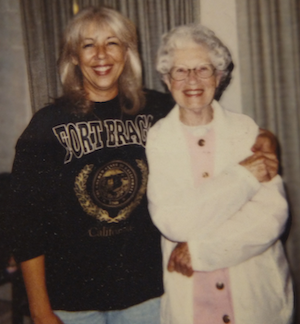 My other Aunt, Irene, had also noticed that things were changing for Leigh and was starting to get worried. Irene had been caring for my Grandmother for more than a decade, who had passed recently from complications due to Alzheimer’s disease.
My other Aunt, Irene, had also noticed that things were changing for Leigh and was starting to get worried. Irene had been caring for my Grandmother for more than a decade, who had passed recently from complications due to Alzheimer’s disease.
Irene had a more acute awareness of the signs, but, at this point, Leigh was only 62 years old, so it never occurred to us that a dementia diagnosis was anywhere near the table. My grandmother was in her 80s when she was diagnosed.
Over the next several weeks we arranged to visit Leigh and look at her living situation and behavior first hand to see if our concerns were warranted. The two sisters, who had always been very close, were beginning to have honest conversations, but Leigh was, understandably, confused and defensive.
One day, soon after our most recent visit, my Aunt Irene received a phone call from one of Leigh’s long-time clients who had grown very concerned due to some unsettling and unusual behavior. Leigh’s client was also a dear friend, and this sweet man arranged for a visit to a neurologist for Leigh, who, amazingly, accepted and agreed to the examination.
Test results came back with a diagnosis of Early-Onset Alzheimer’s. Of course, we were all devastated by the news, not the least of which was Leigh herself. As a family we began putting plans in place to navigate Leigh’s present and future care. Tragically, less than two months after Leigh’s diagnosis, my Aunt Irene passed away suddenly at the age of 67.
A Difficult Pivot
Because I had a more flexible life at that time, I was put in charge of Leigh’s care. We brought Leigh down near me to live in an independent continuing care facility. We felt this was the best opportunity for her to maintain independence and establish a routine that would support her changing brain.
This was a difficult decision, but I was also living alone at the time, in a rural environment that would not have been suitable for the care Leigh required, even in those early days.
This whole period was so difficult. Leigh’s entire world had been upended and her closest ally, her sister, was gone. She was pretty pissed to say the least, and scared. I had great empathy for her and wanted to do the very best I could by her.
Leigh and I have always been close — she’s only 12 years older than I am. Back in the day she would take me to rock concerts. We saw countless movies together. I would spend weekends at her house and we would go on adventures together.
She taught me how to be an adult.
And I always understood and knew her to be fiercely independent and strong willed. She is incredibly intelligent. She began taking college classes in her 40s and walked with two science degrees. She traveled the world, she volunteered at local schools and in the community. She spent time reading to children in the local library and walking pets at the shelter.
The thought of her dying young with this awful disease broke my heart, and still does.
Necessity is the Mother of Invention
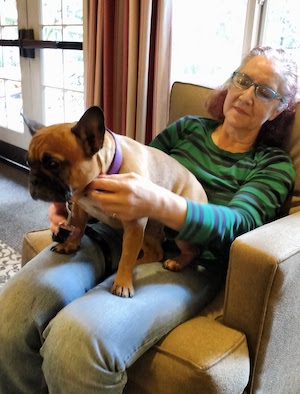 Over time, I helped Leigh settle into her new life. In the early days we still did quite a bit in the world. We went to movies and museums, enjoyed walks in the park and just hung around watching TV or doing jigsaw puzzles.
Over time, I helped Leigh settle into her new life. In the early days we still did quite a bit in the world. We went to movies and museums, enjoyed walks in the park and just hung around watching TV or doing jigsaw puzzles.
I witnessed her disease advancing slowly. One thing I began to notice was that she wasn’t really reading anymore. Like I said, she’s very smart, so she was able to mask this for quite some time – but I did start noticing little things.
For example, she wouldn’t really read the menu in the restaurant or dining room, she would ask me what I was having, or would point to her neighbor’s plate to indicate her meal.
She had always had newspapers in her apartment, with the Sudoku and crosswords filled out or in some stage of being worked on. I started noticing that they remained blank.
She always carried magazines around with her, but when I asked her about them, she would randomly flip through pages and look at the pictures, but she wouldn’t tell me about the story — or, she would ask me to read something for her, saying she had forgotten her glasses (which, she never used).
I chalked it up to another marker in her disease advancement and didn’t call it out or ask her about it, as her illness wasn’t something she liked talking about.
Mirador Magazine Becomes the Necessity
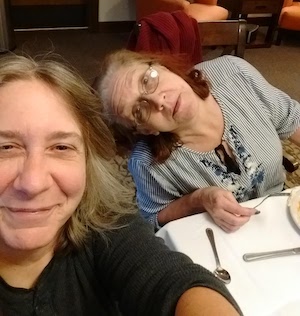 Around that time I had been introduced to Teepa Snow and had been watching her videos. She was also set to appear in town for a day-long seminar, which I attended. I walked away with my head full of information (and immense respect and admiration for Teepa’s wisdom!).
Around that time I had been introduced to Teepa Snow and had been watching her videos. She was also set to appear in town for a day-long seminar, which I attended. I walked away with my head full of information (and immense respect and admiration for Teepa’s wisdom!).
By the way, Teepa and her Positive Approach to Care Team are part of Dementia Map, too!
One of the things that really struck me was how vision can be affected in people with a dementia-related illness. And it occurred to me that my Aunt, who had never needed glasses before, was probably having a difficult time reading the small words on the menu, or in the newspapers, or magazines.
So, I started looking for books and magazines created for people experiencing dementia. There was a chapter book series, but that was pretty much it. There were all kinds of puzzle books. But no general interest magazines of any kind that would appeal to her — something that included nature or science.
I wanted something that was simple without being childish, challenging enough to be engaging but not something that would be frustrating. I found nothing. How could that be? I was incredulous. I stewed on the idea for several months, randomly grazing the Internet.
I bought those chapter books, which were lovely, but Leigh isn’t a book person. Like me, she liked magazines and newspapers. I was perplexed, until one day, on a drive with a friend, it occurred to me that I should create one. I was a freelance writer and had been a managing editor for a regional magazine. Why not?
Why Not, Indeed!
So, I brought in some people. My dear friend Tave Fasce Drake agreed to help design it. And a graphic artist who I had worked with on the other magazine also came on board.
Tave and I spent time talking to people in care facilities and scouring the Internet about what kind of content and layout would work best for this community. And then, somehow, in May of 2021, the first issue of Mirador Magazine rolled off the press and out into the world!
Mirador Magazine:
Serious Solution to a Serious Problem
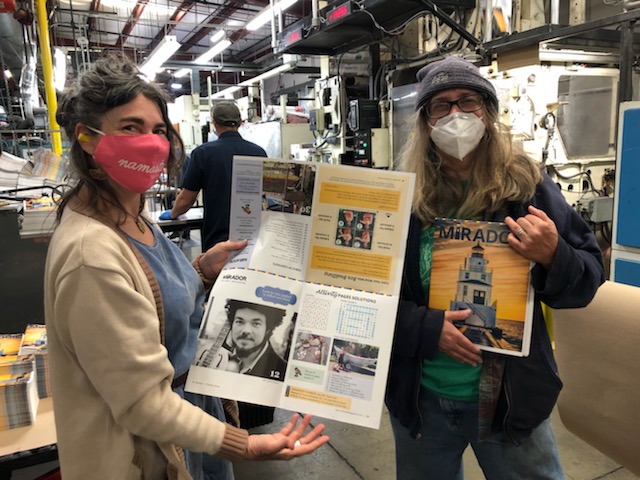
So, how do we make Mirador Magazine something that is accessible to this community? What does that mean?
Well, to start, we use:
- large print
- short sentences
- minimal word count
We don’t use columns to break up the text. We will frame things to keep the eye contained and use images that are crisp, clean and engaging without being distracting.
There is no advertising to draw attention away from the features. We try to make our activities simple enough to be completed but challenging enough to be fun. And, for the friends and family that may be enjoying the magazine alongside their loved ones we offer prompts to help stimulate conversation.
Additionally, our online version provides audio narration so people can read along and links to additional content for enhanced enjoyment.
We try to fill out pages with content that will appeal to a variety of tastes, interests and abilities. We always have a nature page devoted to birds — that one is for Leigh. We have our photo comic for people who might just enjoy looking at smiling faces.
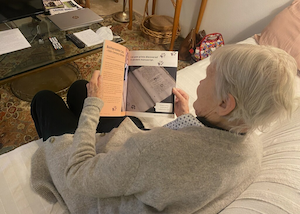 We will often include history and stories of people creating art. We devote one page just to an image that people might enjoy looking at. We try to make each page something that can be used for its own activity.
We will often include history and stories of people creating art. We devote one page just to an image that people might enjoy looking at. We try to make each page something that can be used for its own activity.
We want to create a resource that allows our readers some independence — something they can do on their own. This disease takes so much autonomy from people, we want to offer a little of it back in the pages of a magazine.
Whether or not people “retain” these stories is inconsequential, in my book. What matters is that people are given the opportunity and access to engage in something they have been doing most of their lives and brings them joy and comfort.
What matters is that people are given the opportunity and access to engage in something they have been doing most of their lives and brings them joy and comfort.
Just Getting Started
Since May of 2021, we’ve printed six volumes of Mirador. We have readers all over the country and even “across the pond,” in the U.K. We currently have 3 volumes translated into Spanish online.
We hear from people regularly about how Mirador is resonating with their loved ones, and that brings me so much happiness. I love hearing that someone’s mother enjoys doing the word search, or a woman’s husband likes to hear the audio narration while flipping through the pages.
One subscriber tells me her sister loves just looking through the magazine, and does so with a smile on her face, just enjoying the process. Another man didn’t know his mother could still read until he heard her reading out loud from one of the pages. She had forgotten she knew how as well!
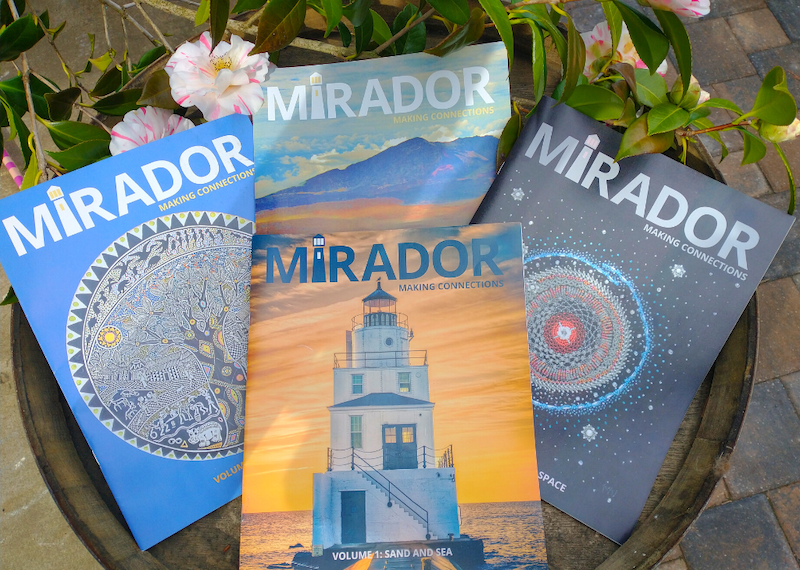
I look forward to the day when there are multiple magazines and books available that cater to this community. I’ve learned that a new book series has been recently launched — the Reminisce line of dementia-friendly books offers readers short stories in an accessible format. Kirk House Publishing is another Dementia Map member! Hurray!
Reading is self-comforting, calming, good for keeping the brain engaged, and most of all — it can be fun. And who doesn’t need more of that!
Labor of Love
Leigh is now in memory care, with magazines and newspapers long behind her. Our visits are different. We don’t go on walks or to the movies. But we sit together and I tell her stories or just prattle on about my day.
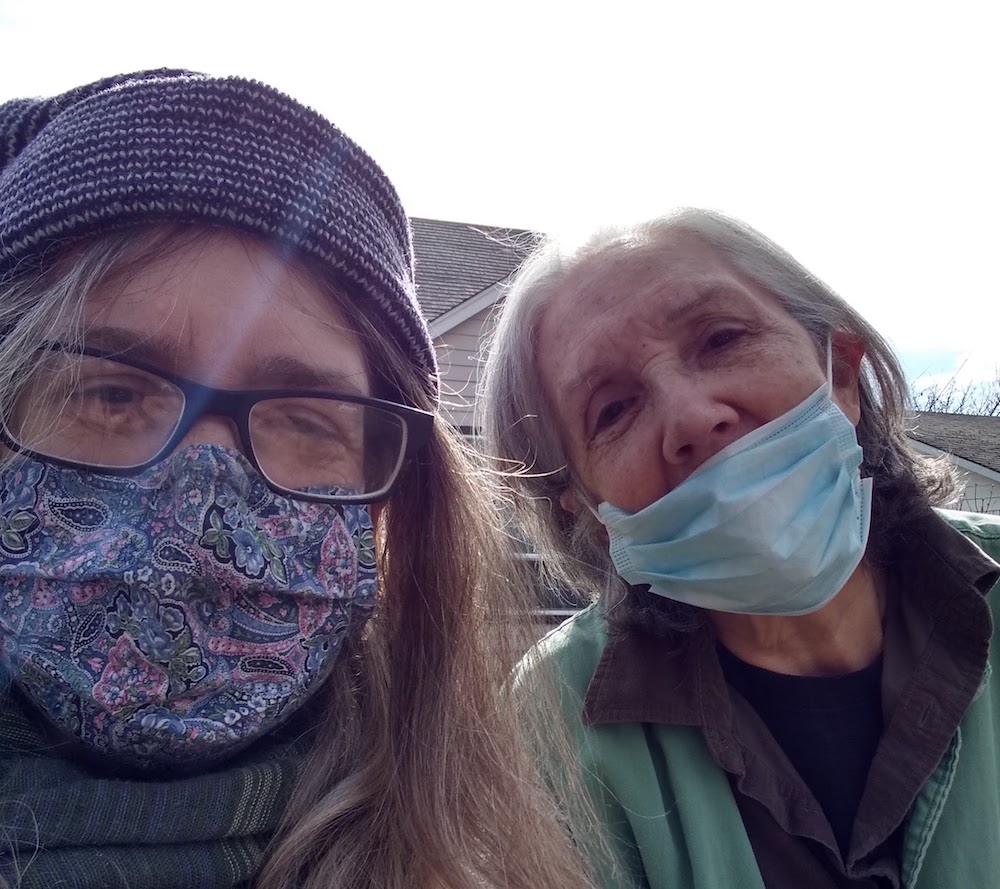
It’s been quite a journey, and while I would not have wished this for her, I’m so grateful that we have been able to share this time together. She still inspires me, just as my Aunt Irene did.
I hope that this work provides some joy and comfort for the millions of other families who are navigating this path.

